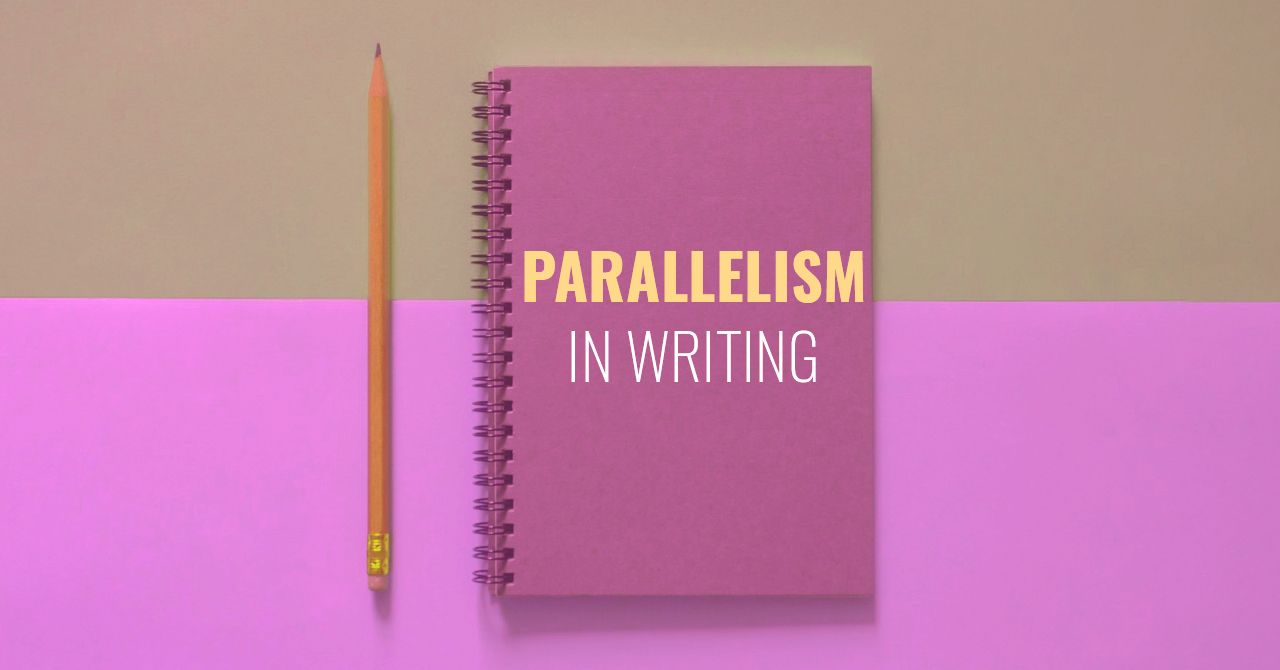
The Definition of Parallelism and Examples of Use
Parallelism is when a sentence contains phrases or clauses with the same grammatical structure. It is used to give a phrase rhythm, making it clearer and easier to understand.
You might have already come across the word “parallelism” and not fully understood what it was referring to, or it may be completely new to you. Either way, we’re going to look at exactly what parallelisms are and how to use them in grammar.
Define Parallelism in Grammar
Parallelism is when a sentence contains phrases or clauses with the same grammatical structure. Parallelism is used to give a phrase rhythm, making it clearer and easier to understand. You may also hear it be called “parallel structure” or “parallel construction.”
Parallelism in Grammar
In order for a sentence to be parallel, it must have coordinated elements that agree with each other grammatically. This means that when using conjunctions (and, for, but, or, so, yet), we must use the same grammatical structure on both sides of the conjunction.
Not a parallelism:
I love reading and to watch TV.
The first part of the sentence uses a gerund, “reading,” while after the conjunction, there is an infinitive. It is acceptable to use a gerund or an infinitive after verbs that express like and dislike, such as “love,” but it’s better to rewrite the sentence as parallelism using only gerunds or only infinitives:
I love reading and watching TV.
I love to read and to watch TV.
What is Parallelism in Writing?
We can use parallelism for all different kinds of grammatical structures.
Nouns
We fed the sheep, the chickens, and the pigs at the farm.
Adjectives
The beauty vlogger’s makeup tutorials are short, simple, and fun.
Adverbs
He spoke clearly and eloquently.
Infinitive verbs without “to”
I hope you’re going to do your homework, tidy your bedroom and eat your dinner.
Infinitive verbs with “to”
As your president, I hope to unite the country, to improve living conditions, and to boost the economy.
Gerunds
I love singing, dancing and acting.
Prepositional phrases
I can’t find my wallet; I’ve already checked under the table, in my purse, and behind the couch.
Clauses
I don’t know who you are, where you came from, or how you got in here, but I need you to leave.
Correlating Conjunctions
Parallelism should also be used with correlating conjunctions such as “either/or,” “neither/nor,” “whether/or,” and “both/and.”
I play both basketball and hockey.
He’s neither watching a movie nor playing computer games.
They don’t know whether to go abroad or to stay close to home.
She not only enjoys baking cakes but also decorating them.
We need to either call a cab or hitch a ride.
Passages with parallelisms
Parallelisms are not only used in single sentences. They can also be used in short passages. The goal is to enable the reader to compare two things in order to understand the message or meaning more easily. This is the case with proverbs, which aim to transmit a message or moral. The most common example of a parallel structure in a proverb is “Give a man a fish, and you feed him for a day; teach a man to fish, and you feed him for a lifetime.”
Rhetorical device
We can use parallelism as a rhetorical device, which is a technique used to evoke an emotional response in the reader in order to make a compelling argument and therefore change their perspective or persuade them of something. Parallelism helps to reinforce an idea by providing balance to a sentence containing a pair or even a series of similar things.
Example of parallelism as a rhetorical device
Make me your class president, and I promise to install more vending machines, extend lunch breaks, and abolish homework!
If you were in her position, would you sit and do nothing? Would you wait for the worst to happen? Or would you stand up and fight for what’s right?
Ice caps are melting, temperatures are rising, forests are burning, what more destruction will it take for people to act?
Hello! My name is Beth. I'm from France. I'm a French and English native speaker and I really like writing.

